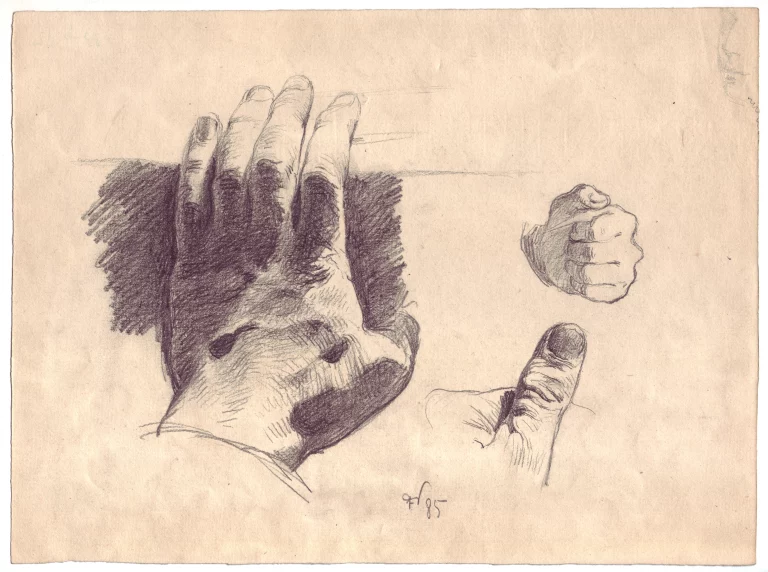
Vallotton Forever. The Retrospective
Plateforme 10 hosts both MCBA and the Félix Vallotton Foundation. The former which conserves the largest collection of the artist’s works anywhere, and the latter, a documentation and research centre, are honoured to present a major retrospective devoted to Félix Vallotton (1865-1925) to commemorate in the artist’s native city of Lausanne the centenary of his death.
The retrospective brings together more than 200 of his most important works from public and private collections, both in Switzerland and throughout Europe.
The time for discovering Félix Vallotton is long past. Rather the public is invited to take in a novel approach to his art that draws on recent research carried out in Lausanne.
The first part of the show highlights Vallotton’s prolific output as he worked hard to make a name for himself on the Parisian art scene during the last two decades of the 19th century. A mere 16 years old when he arrived in the French capital, the young Swiss displayed an all-out creative energy in artistic, literary and newspaper circles. Paintings, woodblock prints, book illustrations, and drawings for the press formed the wheels and cogs of a coherent strategy to position himself aesthetically and politically whilst carving out a niche in the art market.
In the 1890s, Vallotton joined the Nabis and established himself in the milieu of the artists, critics and collectors associated with La Revue blanche. His illustrations and satirical drawings for several contemporary newspapers with strong political affinities meant that he and his point of view were heard in the great debates roiling society at the time. While his practice was in line with a flourishing art scene, his singularity is striking and reveals a fierce need for independence. An aloof and critical observer, he stands apart from his contemporaries thanks to his keen eye, satirical wit, incisive style, and stingingly harsh dissonant colours.
The second part of the show is devoted to the revolution that upended Vallotton’s life and work at the turn of the 20th century. Acquired with no little effort on his part, recognition of his talent was reinforced through the financial security provided by his marriage to Gabrielle Rodrigues-Henriques, the daughter of the art dealer Alexandre Bernheim. The artist now turned away from the unrest of modern life and slipped into the melancholy that was characteristic of his temperament. He abandoned engraving and illustration almost entirely in order to devote himself solely to painting, with every ounce of his being and in complete freedom. Nevertheless he remained a significant presence on the contemporary art scene, where his appearances at Salon gatherings were always anticipated.
Reviving the dialogue with the great tradition of art he had begun in his early youth, Vallotton now confronted the legacy of his illustrious predecessors, Holbein for portraiture, Ingres and Manet for the nude, and Poussin for landscape painting. It was this period that gave birth to the landscapes, portraits, nudes, and mythological subjects that form Vallotton’s decisive contribution to modernity, as the present show makes wonderfully clear.
Curators: Catherine Lepdor, chief curator, MCBA, and Katia Poletti, curator of the Félix Vallotton Foundation, Lausanne
Publication:
Catherine Lepdor and Katia Poletti (eds.), Vallotton Forever, lavishly illustrated, with essays by Lionel Baier, Dario Gamboni, Choghakate Kazarian, Catherine Lepdor, Daniel Maggetti and Katia Poletti, Zurich, Scheidegger & Spiess, 2025, 224 p.
Félix Vallotton, "Cinq heures", 1898. Tempera on board, 35.6 x 58.2 cm. Private collection
Related show
2025 l Année Vallotton
Exhibitions, publications, and events commemorate the centenary of the artist's passing.
Cultural institutions celebrate the relevance of Félix Vallotton (1865–1925) one hundred years after his passing. Across Switzerland, exhibitions, publications, and events invite audiences to discover the exceptional painter, printmaker, illustrator, and writer.
The participating institutions, alongside the MCBA:
- Fondation Félix Vallotton, Lausanne
- Kunst Museum Winterthur, Reinhart am Stadtgarten et Villa Flora
- Musée Jenisch, Vevey
- Photo Elysée, Lausanne
- mudac, Lausanne
- Centre des littératures en Suisse romande, Université de Lausanne
- Museo Castello San Materno, Ascona
- Institut suisse pour l’étude de l’art (SIK-ISEA), Lausanne et Zurich
Partner
The exhibition is supported by the Sandoz Family Philanthropic Foundation, the Françoise Champoud Foundation and the Loterie Romande.



